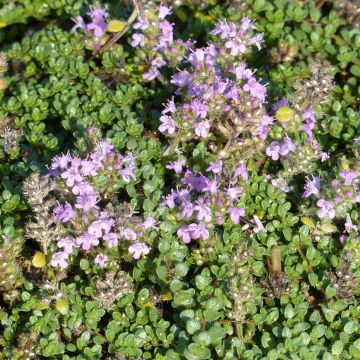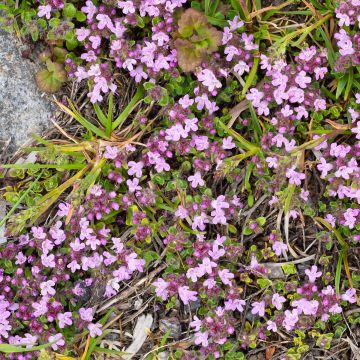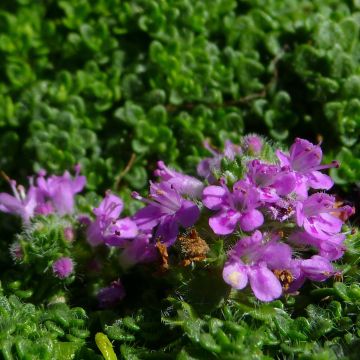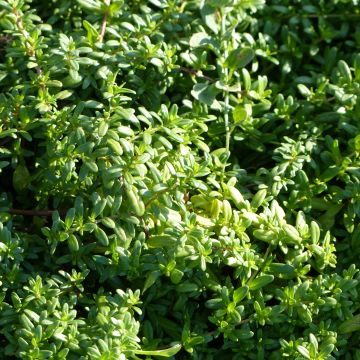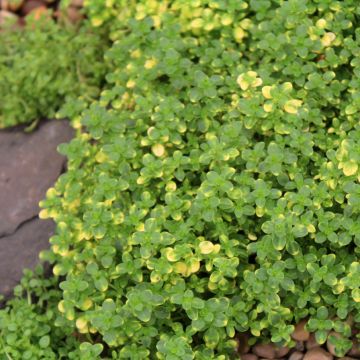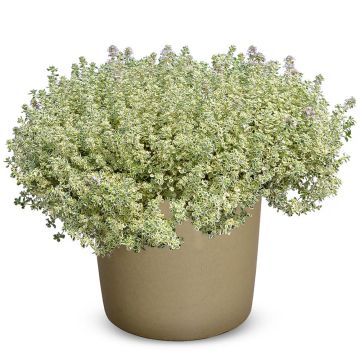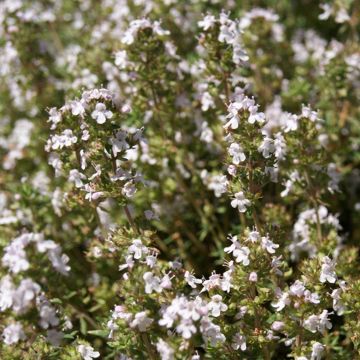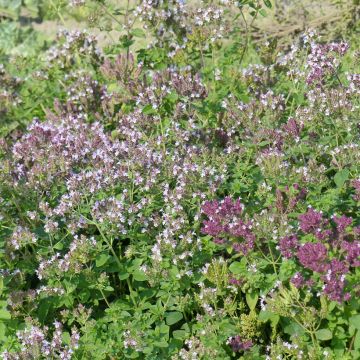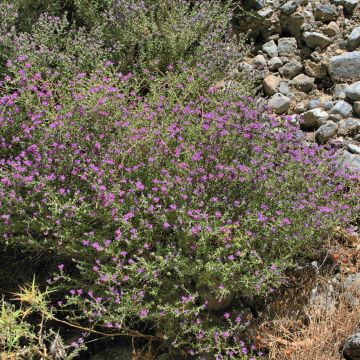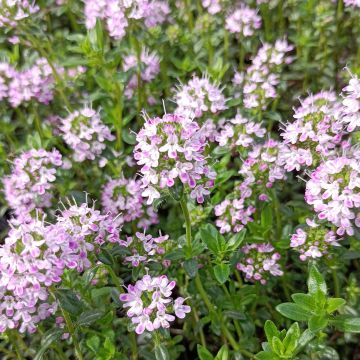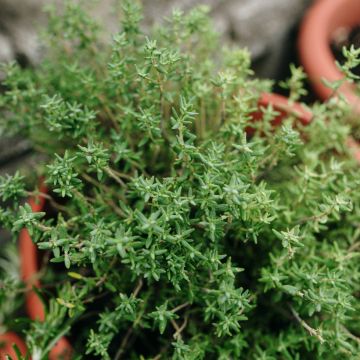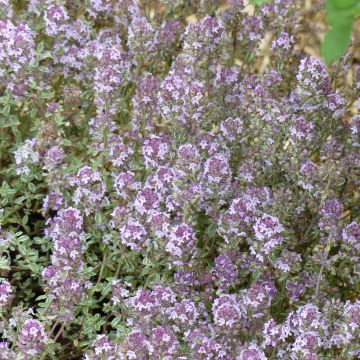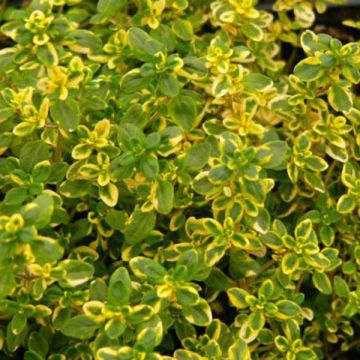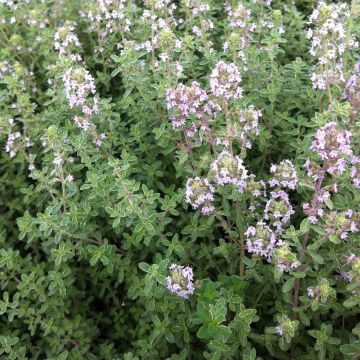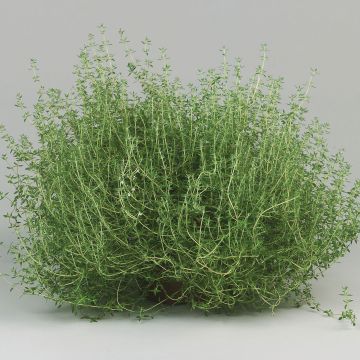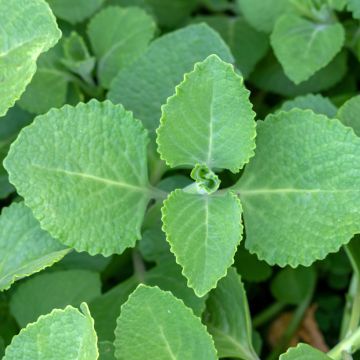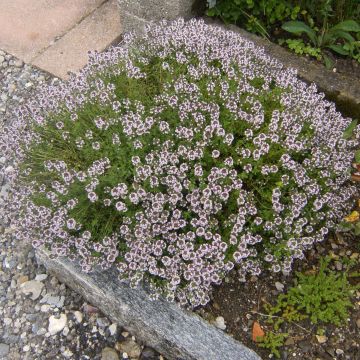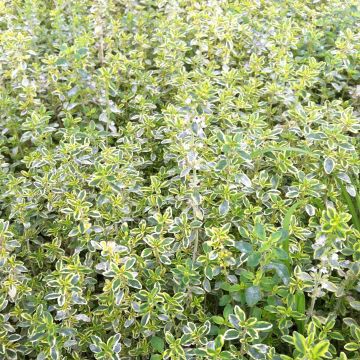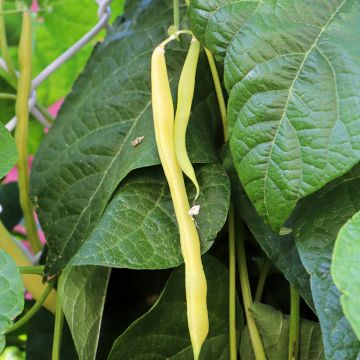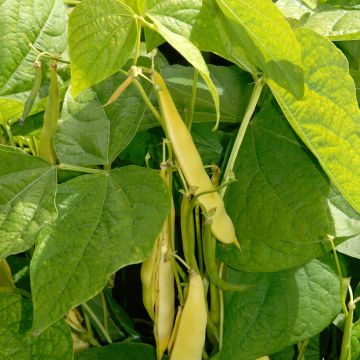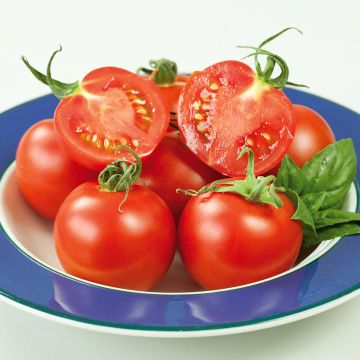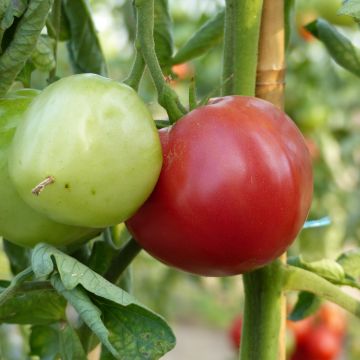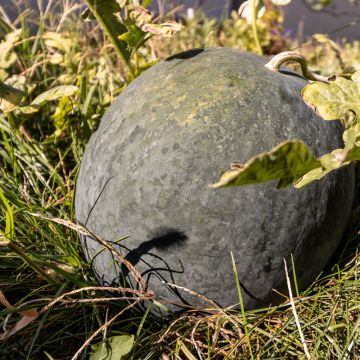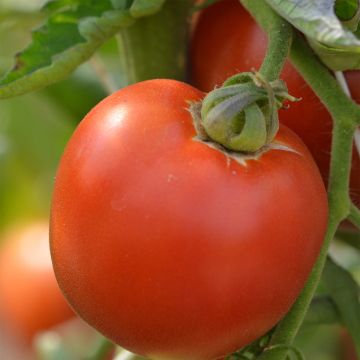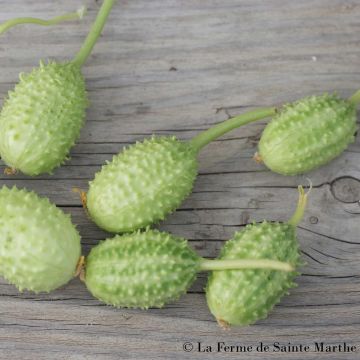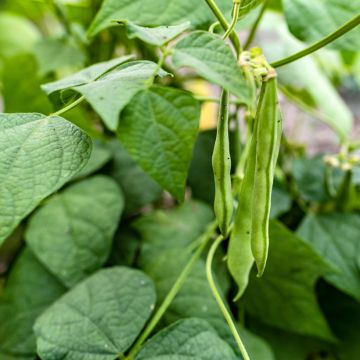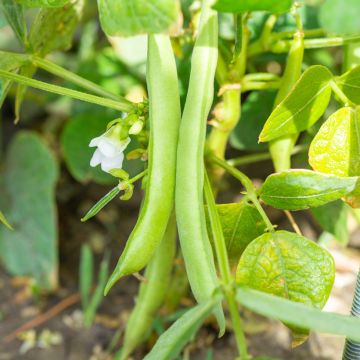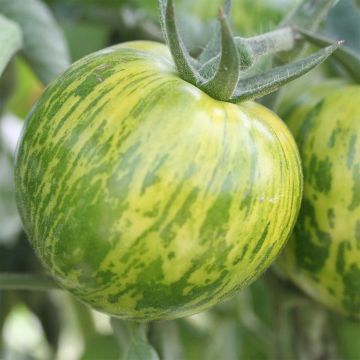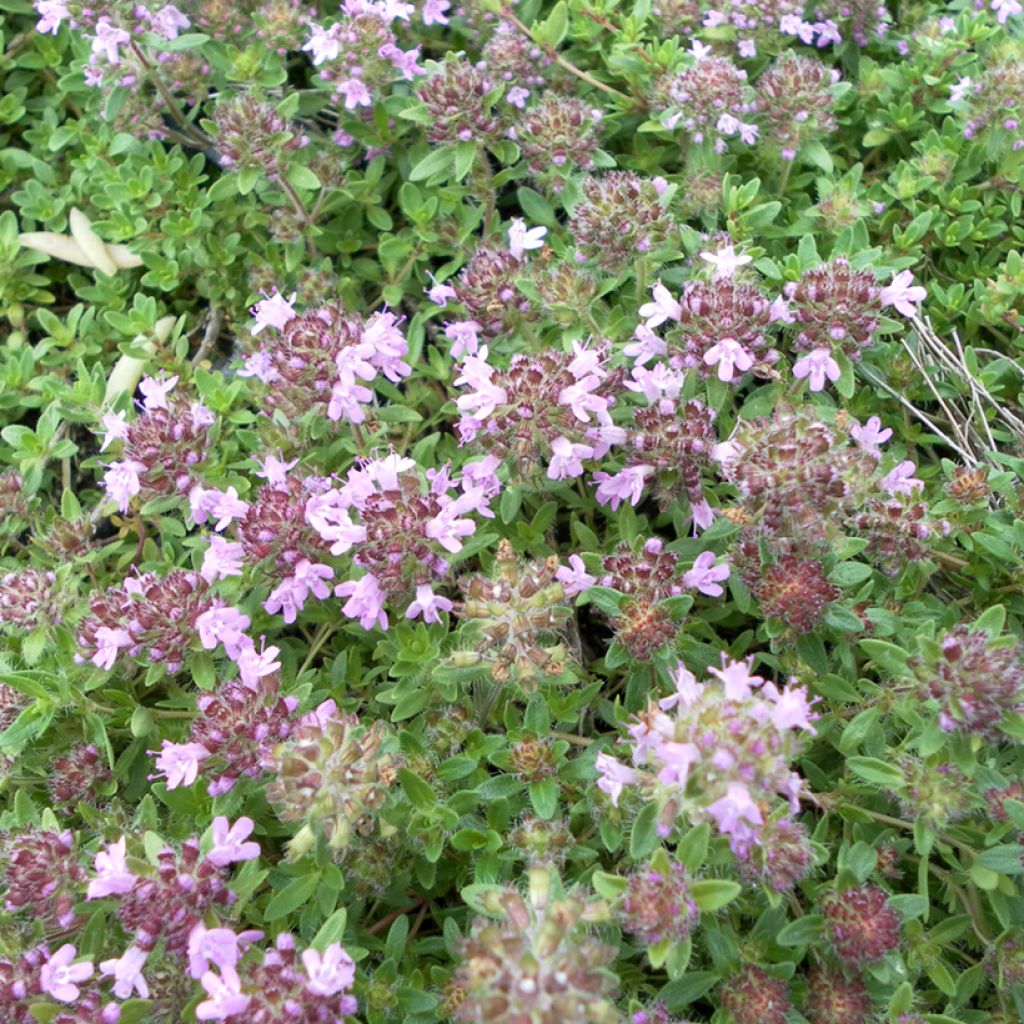

Thymus serpyllum Magic Carpet seeds - Creeping thyme
Thymus serpyllum Magic Carpet seeds - Creeping thyme
Thymus serpyllum Magic Carpet
Wild thyme, Creeping thyme, Mother of thyme
Why not try an alternative variety in stock?
View all →This plant carries a 6 months recovery warranty
More information
We guarantee the quality of our plants for a full growing cycle, and will replace at our expense any plant that fails to recover under normal climatic and planting conditions.
From €5.90 for pickup delivery and €6.90 for home delivery
Express home delivery from €8.90.
Does this plant fit my garden?
Set up your Plantfit profile →
Description
Thymus serpyllum 'Magic Carpet', also known as wild thyme or French thyme, is a variety appreciated for its abundant flowering in bright pink. It forms a dense and low carpet, bearing small dark green aromatic leaves, evergreen in winter. In late spring or summer, depending on the climate, it adorns itself with lots of small magenta flowers just above the foliage. This wild thyme is a robust perennial, suited for poor, well-drained, even sandy soil. It forms a fragrant and colourful ground cover in rockeries and sunny borders.
Originally from Europe, North Africa, as well as Central and Western Asia, wild thyme belongs to the Lamiaceae family and naturally grows at high altitudes, in fairly dry areas, often on limestone and/or sandy soils. The 'Magic Carpet' thyme is a horticultural variety derived from this medicinal and aromatic plant. Its spreading habit extends to form a dense cover 5 to 10 cm in height and 40 to 50 cm in width. Its small, oval, leathery and slightly hairy leaves are carried by flexible stems that root at the nodes, allowing the plant to spread. Numerous essential oil glands, visible under a magnifying glass, cover these 3 mm leaves, offering a more subtle and balsamic fragrance than that of common thyme. Flowering occurs from June to August, in the form of small two-lipped pink magenta flowers, grouped in cymes, which attract a multitude of pollinators. The foliage persists in winter. Like many Mediterranean plants, thyme has a dual root system: a taproot to capture water deeply, and superficial roots capable of retrieving surface moisture.
Highly decorative all year round, 'Magic Carpet' thyme is particularly interesting in well-drained, even fairly dry soils. Thanks to its dense and spreading habit, it is perfect for embellishing a rockery, the gaps between paving stones, wall crevices, or the edges of stone stairs. It tolerates light trampling. It pairs perfectly with other plants from dry areas like lavenders, small-leaved salvias, cotton lavenders, dwarf wormwoods or 'Capri' creeping rosemary. In addition to its ornamental aspect, this thyme is appreciated in cooking for its delicately scented leaves reminiscent of the scrubland. Used alone or in a bouquet garni with bay leaves, rosemary, or parsley, they add a unique aromatic touch to stews, sauces, and marinades. The infused leaves are also known for their digestive properties. Useful and aesthetic, it can be grown in dry borders or in a pot, always within easy reach for cooks.
Report an error about the product description
Flowering
Foliage
Plant habit
Botanical data
Thymus
serpyllum
Magic Carpet
Lamiaceae
Wild thyme, Creeping thyme, Mother of thyme
Cultivar or hybrid
Other Thyme
Planting and care
Sowing:
Sow Thyme from March to May at a temperature ranging from 13 to 16°C. Germination generally takes 18 to 24 days.
Sow in a pot filled with good seed compost, and placed in full light. The seeds should be just covered with a sprinkle of compost or vermiculite. The pot should not be covered, as Thyme is sensitive to humidity; keep the substrate moist but not waterlogged.
When the seedlings appear strong enough to handle, transplant them into a pot and gradually acclimatise your young plants to cooler conditions.
Transplanting to the garden or a pot when the plants are well developed; they may spend their first winter under a cold frame if necessary.
Cultivation:
Wild thyme is a hardy, easy-to-grow herb that thrives in poor, light, even rocky and chalky soils. It should be placed in a sunny spot. This alpine species is slightly less drought-resistant than common thyme. If your soil is rather damp and clayey, we recommend growing it in a pot where it will thrive.
For maintenance, water every 15 days or monthly if the plant is already well established. An annual pruning (of the current year's growth) will maintain a nice compact habit.
Sowing period
Intended location
This item has not been reviewed yet - be the first to leave a review about it.
Vegetable seeds
Haven't found what you were looking for?
Hardiness is the lowest winter temperature a plant can endure without suffering serious damage or even dying. However, hardiness is affected by location (a sheltered area, such as a patio), protection (winter cover) and soil type (hardiness is improved by well-drained soil).

Photo Sharing Terms & Conditions
In order to encourage gardeners to interact and share their experiences, Promesse de fleurs offers various media enabling content to be uploaded onto its Site - in particular via the ‘Photo sharing’ module.
The User agrees to refrain from:
- Posting any content that is illegal, prejudicial, insulting, racist, inciteful to hatred, revisionist, contrary to public decency, that infringes on privacy or on the privacy rights of third parties, in particular the publicity rights of persons and goods, intellectual property rights, or the right to privacy.
- Submitting content on behalf of a third party;
- Impersonate the identity of a third party and/or publish any personal information about a third party;
In general, the User undertakes to refrain from any unethical behaviour.
All Content (in particular text, comments, files, images, photos, videos, creative works, etc.), which may be subject to property or intellectual property rights, image or other private rights, shall remain the property of the User, subject to the limited rights granted by the terms of the licence granted by Promesse de fleurs as stated below. Users are at liberty to publish or not to publish such Content on the Site, notably via the ‘Photo Sharing’ facility, and accept that this Content shall be made public and freely accessible, notably on the Internet.
Users further acknowledge, undertake to have ,and guarantee that they hold all necessary rights and permissions to publish such material on the Site, in particular with regard to the legislation in force pertaining to any privacy, property, intellectual property, image, or contractual rights, or rights of any other nature. By publishing such Content on the Site, Users acknowledge accepting full liability as publishers of the Content within the meaning of the law, and grant Promesse de fleurs, free of charge, an inclusive, worldwide licence for the said Content for the entire duration of its publication, including all reproduction, representation, up/downloading, displaying, performing, transmission, and storage rights.
Users also grant permission for their name to be linked to the Content and accept that this link may not always be made available.
By engaging in posting material, Users consent to their Content becoming automatically accessible on the Internet, in particular on other sites and/or blogs and/or web pages of the Promesse de fleurs site, including in particular social pages and the Promesse de fleurs catalogue.
Users may secure the removal of entrusted content free of charge by issuing a simple request via our contact form.
The flowering period indicated on our website applies to countries and regions located in USDA zone 8 (France, the United Kingdom, Ireland, the Netherlands, etc.)
It will vary according to where you live:
- In zones 9 to 10 (Italy, Spain, Greece, etc.), flowering will occur about 2 to 4 weeks earlier.
- In zones 6 to 7 (Germany, Poland, Slovenia, and lower mountainous regions), flowering will be delayed by 2 to 3 weeks.
- In zone 5 (Central Europe, Scandinavia), blooming will be delayed by 3 to 5 weeks.
In temperate climates, pruning of spring-flowering shrubs (forsythia, spireas, etc.) should be done just after flowering.
Pruning of summer-flowering shrubs (Indian Lilac, Perovskia, etc.) can be done in winter or spring.
In cold regions as well as with frost-sensitive plants, avoid pruning too early when severe frosts may still occur.
The planting period indicated on our website applies to countries and regions located in USDA zone 8 (France, United Kingdom, Ireland, Netherlands).
It will vary according to where you live:
- In Mediterranean zones (Marseille, Madrid, Milan, etc.), autumn and winter are the best planting periods.
- In continental zones (Strasbourg, Munich, Vienna, etc.), delay planting by 2 to 3 weeks in spring and bring it forward by 2 to 4 weeks in autumn.
- In mountainous regions (the Alps, Pyrenees, Carpathians, etc.), it is best to plant in late spring (May-June) or late summer (August-September).
The harvesting period indicated on our website applies to countries and regions in USDA zone 8 (France, England, Ireland, the Netherlands).
In colder areas (Scandinavia, Poland, Austria...) fruit and vegetable harvests are likely to be delayed by 3-4 weeks.
In warmer areas (Italy, Spain, Greece, etc.), harvesting will probably take place earlier, depending on weather conditions.
The sowing periods indicated on our website apply to countries and regions within USDA Zone 8 (France, UK, Ireland, Netherlands).
In colder areas (Scandinavia, Poland, Austria...), delay any outdoor sowing by 3-4 weeks, or sow under glass.
In warmer climes (Italy, Spain, Greece, etc.), bring outdoor sowing forward by a few weeks.

































